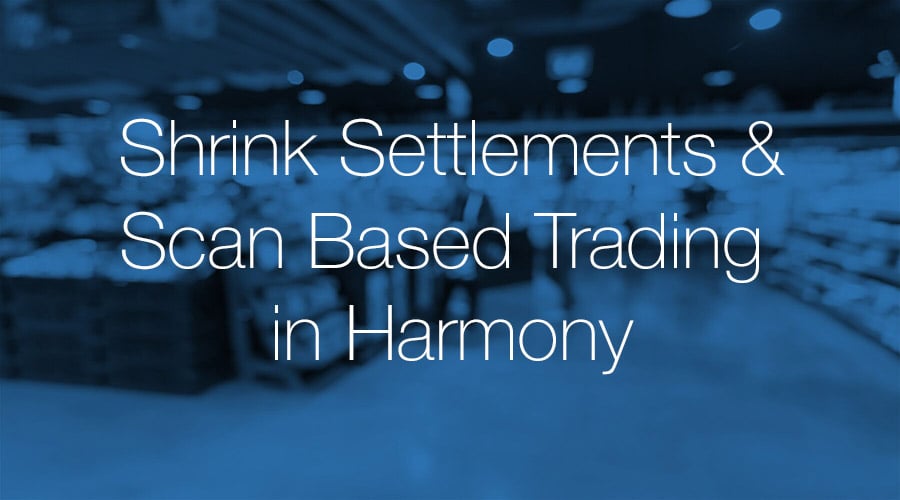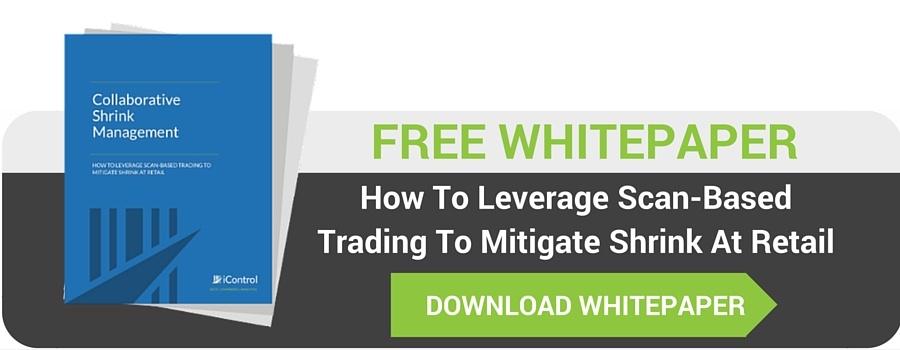Whatever the cause – vendor error or fraud, employee theft, pricing error, or damage – shrink can have an enormous effect on sales, margins and profits, impacting both the retailer and supplier partner. Using iControl’s Harmony platform to settle shrink between retailer and supplier can reduce work and increase the accuracy of settlements. The setup process in Harmony once a retailer and supplier have reached a shrink agreement takes into account all necessary settings to ensure the most accurate settlement possible – and it’s easy!

Shared Shrink Settings in Harmony
Shrink settings are determined by the agreement reached between retailer and supplier regarding percentage of shrink liability from 0% to 100% of shrink. Retailers might also insert a % based cap on total amount of shrink they will pay or simply go with a 50/50 split. For example a retailer might agree to a 50/50 split up to 2% of POS dollars and 100% supplier liability from 2.01% - 100% of POS dollars. Shrink in Harmony may be aggregated at banner, store or UPC level allowing for greater visibility to causes of shrink for the settlement date range.
Store Activities Data
The Store Activities page in Harmony contains data from supplier that will be used for the shrink report that will be submitted to the retailer for approval. It contains supplier deliveries, credits and inventory counts for the date range of the shrink settlement. This combined with POS sales data from the retailer is used to create detailed shrink report to be submitted to the retailer. The shared shrink settings used in Harmony allow for the following to be executed.
- Define a maximum shrink value to be submitted for payment.
- Maximums can be calculated based on POS dollars or Inventory dollars (BI$ + Net Delivery $).
- Maximums can be based on an entire chain, banner or each store's claimed shrink as a % of POS dollars or Inventory dollars.
- Shared shrink settings can be added, edited and deleted as needed.
- Shared shrink settings can be viewed at chain, banner or store level.
- After shared shrink settings are applied to UPCs, are partial units to be rounded or remain as partial.
- Establish inventory count rules pertaining to when count is applied beginning or end of day, before or after deliveries.
- Establish inventory unit cost rule as FIFO or LIFO or weighted average cost which will account for changes during settlement period with OI’s or other adjustments.
Submission of Shrink Reporting and Retailer Approval
Once the agreed upon settlement period has ended, Harmony is used to quickly and accurately settle shrink in just a few easy steps.
- Supplier logs into Harmony and runs a shrink report based on the last count date to be used for settlement.
- Supplier reviews data and submits into pending status generating shrink report.
- Report is submitted to retailer who reviews.
- If retailer agrees with the data on the report they will log into Harmony & approve pending shrink.
- Invoice is generated in Harmony and submitted to retailer for payment.
As you can see using the automated features of the Harmony platform to settle shrink will allow you to have all your data in one place for fast simple settlements saving your company time and money. Additionally you will be provided with the tools to better understand the causes of your shrink and inventory issues, providing a more profitable DSD collaboration between retailer and supplier.
The end result? Accurate settlement, at the item and store level, with full transparency to both sides. Now that’s how it’s done. And once you settle shrink by the item and store, you can see what’s causing the shrink, you can do something to mitigate it.
Please feel free to contact us with any questions or to schedule a demo of Harmony and the entire Empower DSD Automation suite.
